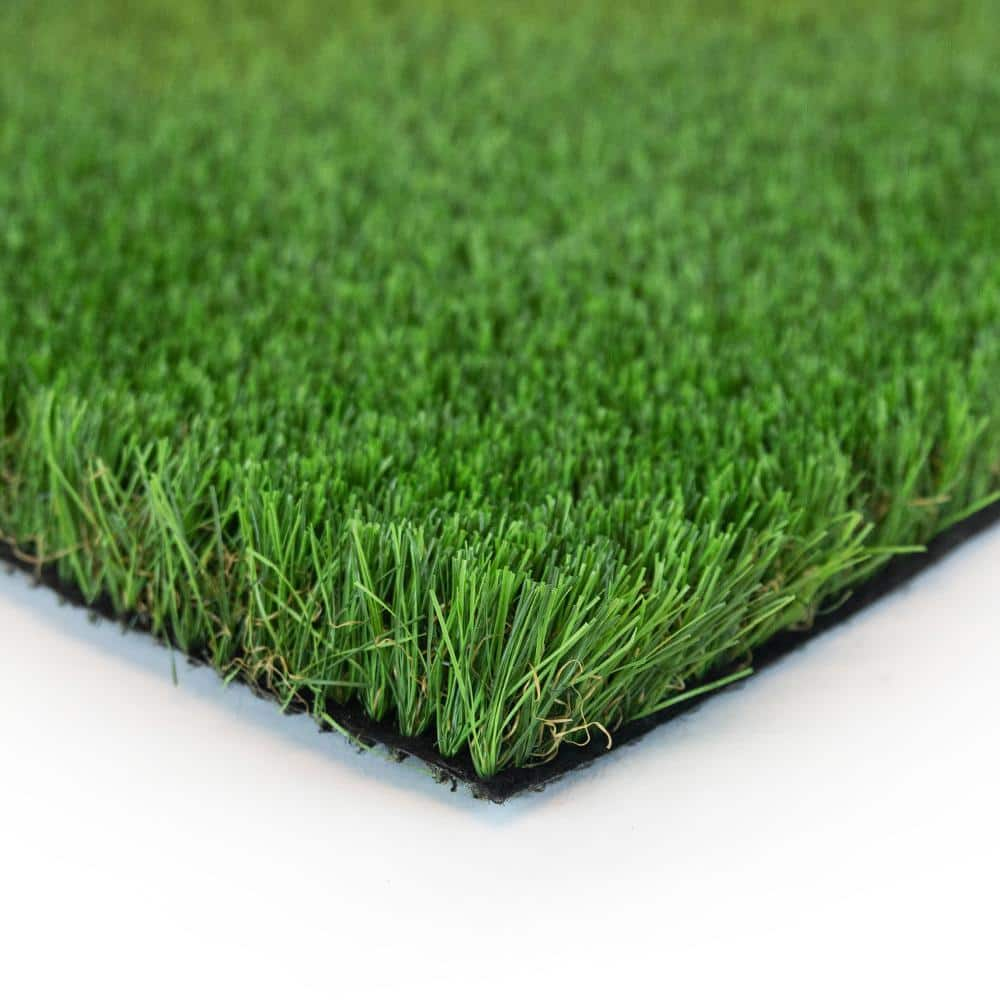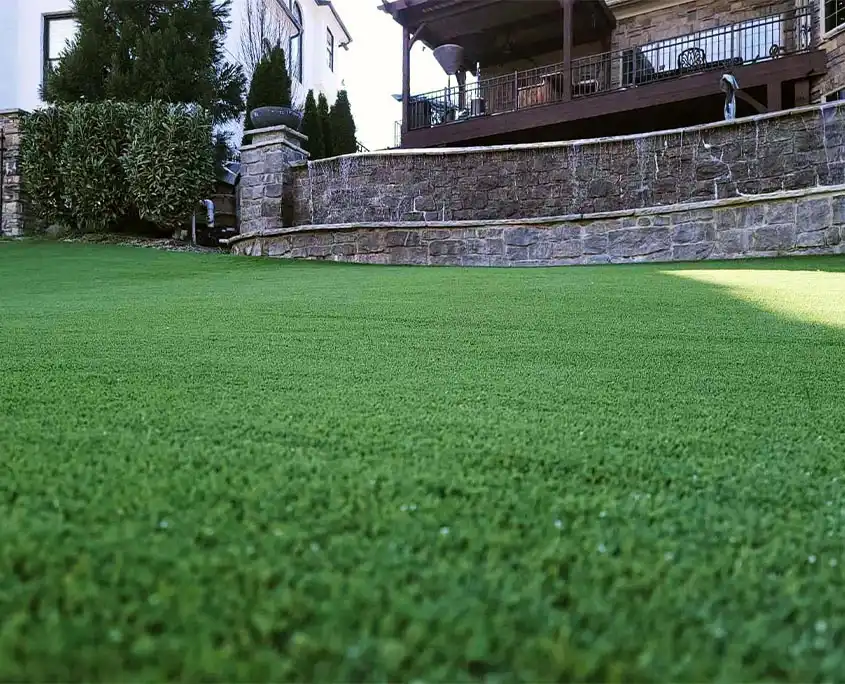Look Into the Environmental Perks of Opting for Artificial Turf Solutions
The fostering of fabricated lawn solutions presents a compelling opportunity to resolve pushing ecological difficulties. By considerably decreasing water usage and reducing the application of damaging chemicals, these options not only advertise lasting landscape design however likewise safeguard neighborhood ecosystems. The reduced carbon footprint linked with reduced maintenance tasks contributes to an extra sustainable approach to land monitoring. The implications of these advantages expand beyond mere conservation efforts, increasing questions regarding their long-term effect on environment preservation and general ecological balance. Discovering these dimensions exposes an intricate interplay worth taking into consideration.
Water Conservation Advantages
One of one of the most substantial advantages of fabricated lawn is its capacity to preserve water. Traditional grass lawns require substantial irrigation, specifically in locations vulnerable to dry spell or water constraints. In comparison, synthetic grass does not require watering, substantially minimizing the general demand for water resources. This feature is specifically advantageous in arid regions where water deficiency is a pushing problem.
By removing the need for routine watering, fabricated grass adds to sustainable landscape techniques and helps alleviate the environmental effect of too much water consumption. In addition, the conservation of water encompasses the decrease of runoff, which can result in dirt disintegration and river air pollution.
Furthermore, the installment of artificial grass permits municipalities and property owners to assign water resources a lot more successfully, focusing on necessary uses such as drinking water and agriculture. The change in the direction of synthetic grass not only promotes accountable water usage but also aligns with broader environmental objectives focused on protecting natural deposits.
As areas significantly focus on sustainability, the water conservation advantages of artificial lawn offer an engaging instance for its fostering in household and commercial landscaping tasks.
Lowered Chemical Usage
The transition to artificial lawn significantly lowers the reliance on chemical therapies typically used in all-natural lawn maintenance. Traditional grass management usually involves the application of herbicides, plant foods, and chemicals to promote development and control pests. These chemicals can posture dangers to human wellness, regional wild animals, and the atmosphere, contributing to dirt and water contamination.
On the other hand, synthetic grass removes the requirement for these harmful materials. Once mounted, it requires very little maintenance, mainly including routine cleansing and irregular infill replenishment. This decrease in chemical use not only profits the immediate atmosphere yet likewise adds to more comprehensive eco-friendly stability. By reducing the release of synthetic substances into the ecosystem, synthetic grass promotes healthier dirt and water systems.
In addition, the lack of chemical drainage connected with synthetic grass installments helps secure regional rivers from air pollution, sustaining marine life and maintaining biodiversity. Artificial turf companies phoenix. As neighborhoods progressively prioritize sustainable practices, going with synthetic grass presents a feasible option that straightens with ecological conservation goals. Through this change, homeowner can delight in lush green spaces without endangering eco-friendly health and wellness, leading the way for an extra sustainable future
Lower Carbon Impact

Furthermore, the installment of synthetic turf can lead to considerable water conservation. Natural yards require substantial quantities of water for irrigation, which not only includes in the carbon impact associated with water extraction and treatment however additionally strains local water resources. On the other hand, artificial turf needs very little upkeep, calling for no watering, thereby substantially lowering water usage and its associated power costs.
Additionally, more tips here the longevity of synthetic grass adds to its decreased carbon effect. With a life-span of approximately 15 years or even more, the demand for frequent substitutes is diminished, resulting in less waste and lower power intake in production and getting rid of typical yard choices. On the whole, synthetic grass presents a lasting alternative for eco aware landscape design.
Habitat Preservation
Habitat conservation is a critical factor to consider in the discussion over landscape design choices, particularly when contrasting fabricated lawn to natural grass. All-natural lawn lawns typically need comprehensive maintenance, consisting of using plant foods, pesticides, and herbicides, which can adversely influence regional environments. These chemicals can leach right into the dirt and waterways, hurting native vegetation and animals and interfering with neighborhood habitats.
Fabricated turf eliminates the requirement for damaging chemicals, thus protecting neighboring wild animals and maintaining the integrity of bordering ecosystems. The installation of synthetic grass can lead to the conversion of former turf areas into more biodiverse landscapes, such as pollinator yards or indigenous plant locations, which can support local wildlife.
Ultimately, the transition to synthetic grass not just preserves water and minimizes upkeep efforts but additionally cultivates a much more harmonious relationship in between human tasks and the natural environment, advertising environment preservation in the process.
Long-Term Sustainability
Lasting sustainability is a crucial factor in reviewing the benefits of synthetic turf over typical lawn lawns. One of one of the most considerable benefits of artificial grass is its durability; it can last web approximately 15-20 years with very little maintenance, whereas all-natural turf calls for regular reseeding and substitute. This durability reduces the requirement for constant sources, such as water, fertilizers, and chemicals, which are important for preserving a healthy yard lawn.
In addition, synthetic lawn contributes to a decrease in carbon emissions linked with lawn care tools. Conventional grass frequently call for gas-powered mowers, trimmers, and blowers, every one of which contribute to air pollution. Arizona artificial turf. In contrast, man-made lawn eliminates the requirement for such tools, promoting a cleaner environment
Additionally, the manufacturing of synthetic grass significantly utilizes recycled materials, improving its sustainability account. As suppliers adopt green practices, the environmental footprint of synthetic grass remains to reduce.

Conclusion
The adoption of synthetic grass options offers significant environmental benefits, including substantial water conservation, reduced dependence on harmful chemicals, and a lower carbon impact. Furthermore, synthetic grass aids in preserving natural habitats by minimizing land disturbance and advertising lasting sustainability via using long lasting products. Collectively, these factors emphasize the possibility of fabricated lawn to contribute positively to ecological wellness and provide a practical alternative to traditional landscape design methods in a significantly resource-conscious globe.
In comparison, fabricated turf does not require watering, dramatically decreasing the total demand for water resources. By lessening the release of artificial compounds right into the ecological community, man-made turf advertises healthier dirt and water systems.
Additionally, the installment of synthetic lawn can result in considerable water conservation. In comparison, man-made lawn needs marginal maintenance, needing no watering, thereby dramatically decreasing water use and its associated energy prices.
